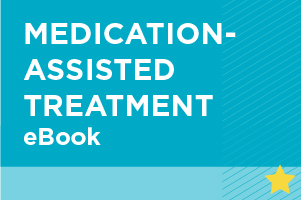Medication for addiction treatment (MAT), as part of a comprehensive treatment plan, is considered the gold standard of care for people with opioid use disorder. Medications include methadone, buprenorphine (Suboxone, Subutex, Zubsolv) and naltrexone (Vivitrol) to help manage cravings, reduce drug use and reduce the risk of overdose — and, as a result, reduce HIV and Hepatitis C risks associated with IV use and reduce criminal behaviors.
While these medications are very effective and can be life-saving when used as prescribed, it’s important that parents know the fine print about some of the challenges that may come with different types of MAT.
Naltrexone
Naltrexone (known by the brand name Vivitrol) is an opiate blocker, which means that it completely blocks the euphoric effects of opiates like heroin and prescription pain pills. It is given as a vaccination. A person must be opioid-free for 7-14 days prior to getting the first shot to prevent withdrawal. Many providers will initially offer the pill form as a precautionary measure to make sure the person has no adverse reaction to the medication.
How frequent are the shots?
While most people will get the shot monthly, some may metabolize the medication more quickly and need the shot every three weeks. If insurance won’t cover more frequent administration, the pill form of naltrexone can be used, taken on a daily basis until the next shot.
How long will treatment take?
It’s important to complete the course of treatment as prescribed by the treatment team. If a person prematurely stops taking naltrexone, he/she may be more at risk for an overdose due to lower tolerance.
How much does it cost?
Naltrexone can be expensive, especially if there is limited or no insurance coverage. The manufacturer, Alkermes, offers a co-pay card on their website that can help reduce the overall expense. Families may also consider appealing to their insurance company under healthcare parity laws for coverage, similar to medications needed for any other chronic illness.
What if my child has an injury or surgery?
Because naltrexone is a complete opioid blocker, an alternative pain medication plan will be needed for injuries and surgeries. Your child may not feel the therapeutic effects of opioid medications for pain, cough and colds.Therefore, carrying a patient wallet card or bracelet is important as a safety measure not only for naltrexone, but for all forms of MAT.
Is there an overdose risk with naltrexone?
In rare cases, a person may try to “override” the medication, taking an excessive amount of opioids in order to feel the euphoric effects, which can lead to dangerous consequences including death. Abruptly stopping the medication also poses an overdose risk due to lower tolerance of heroin and opioids, so it’s best to make this decision with the prescribing doctor.
Buprenorphine
Buprenorphine (known by the brand names Suboxone, Zubsolv, Sublocade and Subutex), is taken daily as an oral pill, as a film placed under the tongue or as a monthly injection. It is used to manage withdrawal symptoms when a person is detoxing in treatment, and can be used as part of an ongoing maintenance plan to manage cravings. It can be prescribed by any doctor who has completed specialized training and obtained a waiver, or a doctor with a DEA registration number. It is administered in the privacy of an office setting or outpatient clinic.
Is it taken every day?
One of the frustrations of many parents is the daily dosing of buprenorphine, as some loved ones don’t take the medication as prescribed, which is no different from many other medications for other diseases. If this is the case, it may be helpful to investigate Sublocade, a monthly injection; however, this formulation is generally recommended for people who have been stable on buprenorphine for some time.
How do you know you have the correct dosage?
Some people still experience cravings while taking buprenorphine, in which case the prescribed dose may be too low and needs to be increased. It is important to discuss this with the provider to see if the dosage is adequate.
What about the taste?
Some people don’t like the taste of the Suboxone film, finding Subutex or Zubsolv more palatable. A provider can help address this issue.
Can you become dependent on buprenorphine?
Buprenorphine will result in a degree of dependence on the medication, similar to other medications like those for acid reflux, insulin, etc. If a person abruptly stops taking the medication, withdrawal symptoms can be experienced. The best course of action is to stay on the medication as prescribed and use a very slow taper with guidance by the provider over several months or longer. This likely means that treatment will run the course of a year or more, and must be tailored to the patient’s needs.
A person who has never used buprenorphine before will likely experience a sense of euphoria on the medication, but for a son or daughter who has been using opiates, it does not create this experience — rather, it creates a sense of normalcy, reducing cravings.
Is there an overdose risk?
Suboxone and Zubsolv contain naloxone, which is used to prevent the misuse of the medication by IV injection. (Note that this is the same naloxone that is used to reverse overdoses; however, in this case, it is used to prevent opioid misuse, and will not reverse an overdose.) This precaution is not part of the formulation for Subutex, and, as a result, some providers will not prescribe Subutex unless it’s for a pregnant woman.
Overdosing on buprenorphine is usually not a result of the medication itself but in combination with other substances like benzodiazepines (i.e. Xanax, Klonopin, Valium) and alcohol.
Methadone
Methadone is given in a pill, wafer or liquid form to be taken daily, usually at a clinic — although some states allow clients to take the medication home after a period of time. Many doctors will recommend methadone for patients who have been unsuccessful using buprenorphine.
Methadone lasts fairly long in the system, usually for 24 to 36 hours, preventing the frequent highs and lows associated with drug-seeking behaviors. Clinic staff will check toxicity levels as the medication builds up in the body, and adjust dosage levels accordingly.
Where do I get it?
While methadone has been around for decades and many people do very well on this medication, it needs to be obtained at an authorized clinic. Daily trips to a clinic can be helpful to receive counseling and support, but it may be a big commitment from a time standpoint, especially if the clinic is a significant distance from your home.
How long will treatment take?
There is no specified duration of treatment; however, 12 months is considered a minimum for methadone maintenance. Some people may be on this medication for a lifetime.
Is there an overdose risk?
There is a risk of overdosing on methadone, though the oversight provided in the clinic setting is a protective factor. Most of the people who overdose on methadone are using it for pain management purposes, not as MAT.
Some Additional Considerations
What do I do if MAT isn’t available?
While MAT has been widely endorsed by experts in the field of substance use disorders as part of comprehensive treatment plans, parents may find that their loved ones are confronted by situations where it would be helpful to have MAT, but it isn’t allowed or offered. This is true of some treatment facilities, sober living homes and jails. Unfortunately, there is no easy answer for this other than to try and find programs that will support your son or daughter’s treatment plan.
Your voice, as part of a chorus of advocacy efforts, is needed to make these scientifically proven treatment options more universally available.
Will MAT help with other substances besides opioids?
These medications are designed to address heroin and other opioids (although Vivitrol can be used to address alcohol), but will not preclude the use of other substances, like alcohol, marijuana, benzodiazepines and stimulants.
How can I best support my child?
While these considerations are important in understanding how MAT works, your support and encouragement are an essential part of your son or daughter’s recovery and will greatly contribute to your child’s well-being. The longer they have MAT, the greater the opportunities for success.

Download the Medication-Assisted Treatment eBook
This eBook will help you learn more about medication-assisted treatment – what it is, how it’s used, where to find it and how you can best support your child through treatment.
 Get Support
Get Support
